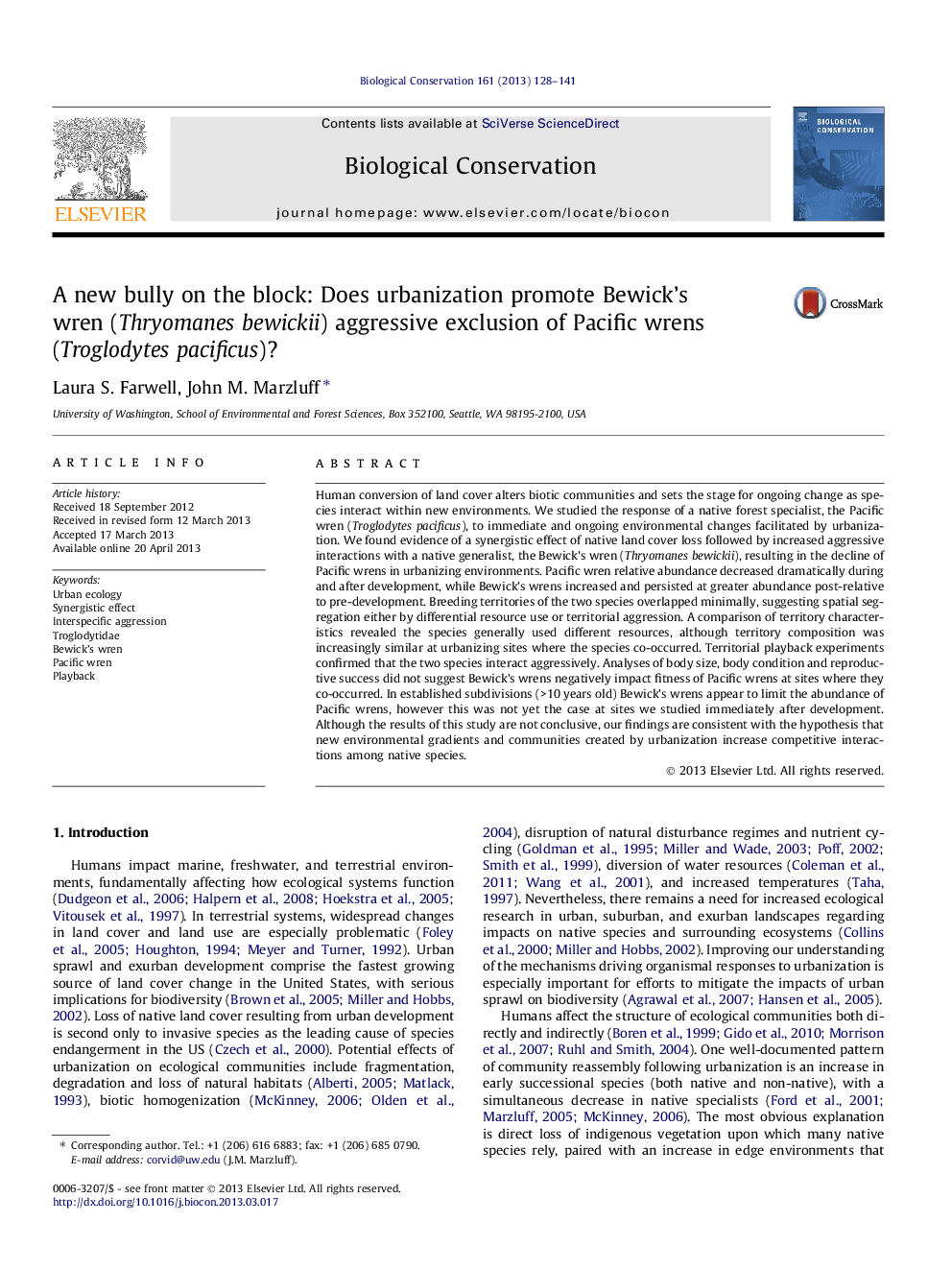| کد مقاله | کد نشریه | سال انتشار | مقاله انگلیسی | نسخه تمام متن |
|---|---|---|---|---|
| 6300719 | 1617940 | 2013 | 14 صفحه PDF | دانلود رایگان |

- Two native birds respond differently to urbanization: Pacific wrens decrease while Bewick's wrens increase.
- Bewick's wrens appear to limit the abundance of Pacific wrens by aggressive, interspecific territorial defense.
- Interspecific aggression and dramatic habitat changes during urbanization synergistically reduce Pacific wren abundance.
- As urbanization alters land cover, ecological communities shift and new biotic interactions may threaten sensitive species.
- Studies of organisms pre-, during and post-urbanization offer insight into mechanisms driving human impacts on native species.
Human conversion of land cover alters biotic communities and sets the stage for ongoing change as species interact within new environments. We studied the response of a native forest specialist, the Pacific wren (Troglodytes pacificus), to immediate and ongoing environmental changes facilitated by urbanization. We found evidence of a synergistic effect of native land cover loss followed by increased aggressive interactions with a native generalist, the Bewick's wren (Thryomanes bewickii), resulting in the decline of Pacific wrens in urbanizing environments. Pacific wren relative abundance decreased dramatically during and after development, while Bewick's wrens increased and persisted at greater abundance post-relative to pre-development. Breeding territories of the two species overlapped minimally, suggesting spatial segregation either by differential resource use or territorial aggression. A comparison of territory characteristics revealed the species generally used different resources, although territory composition was increasingly similar at urbanizing sites where the species co-occurred. Territorial playback experiments confirmed that the two species interact aggressively. Analyses of body size, body condition and reproductive success did not suggest Bewick's wrens negatively impact fitness of Pacific wrens at sites where they co-occurred. In established subdivisions (>10Â years old) Bewick's wrens appear to limit the abundance of Pacific wrens, however this was not yet the case at sites we studied immediately after development. Although the results of this study are not conclusive, our findings are consistent with the hypothesis that new environmental gradients and communities created by urbanization increase competitive interactions among native species.
Journal: Biological Conservation - Volume 161, May 2013, Pages 128-141